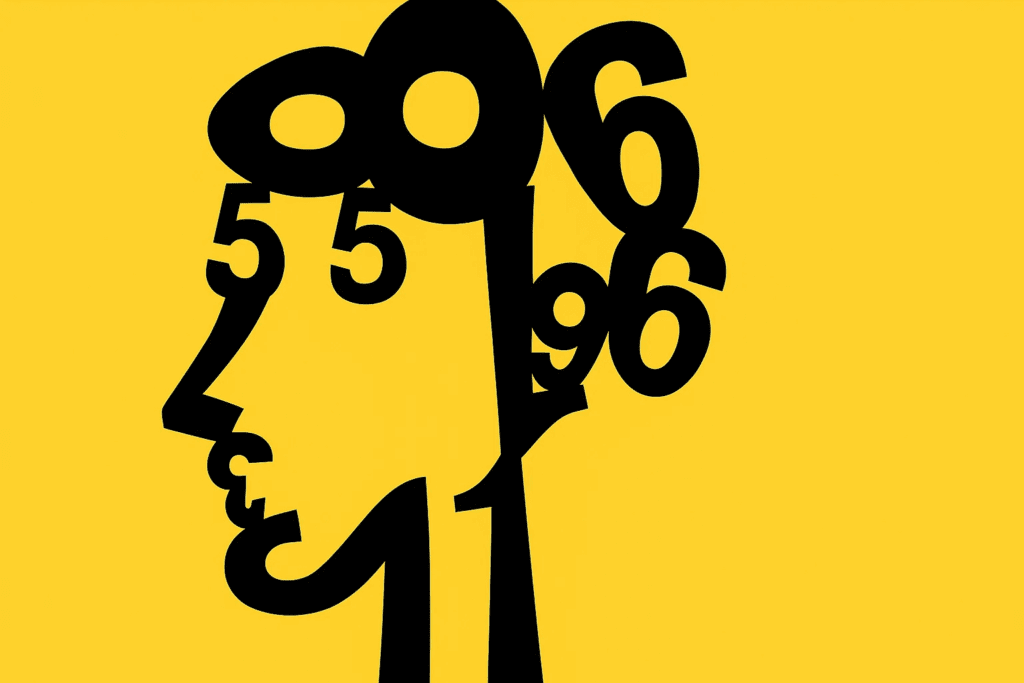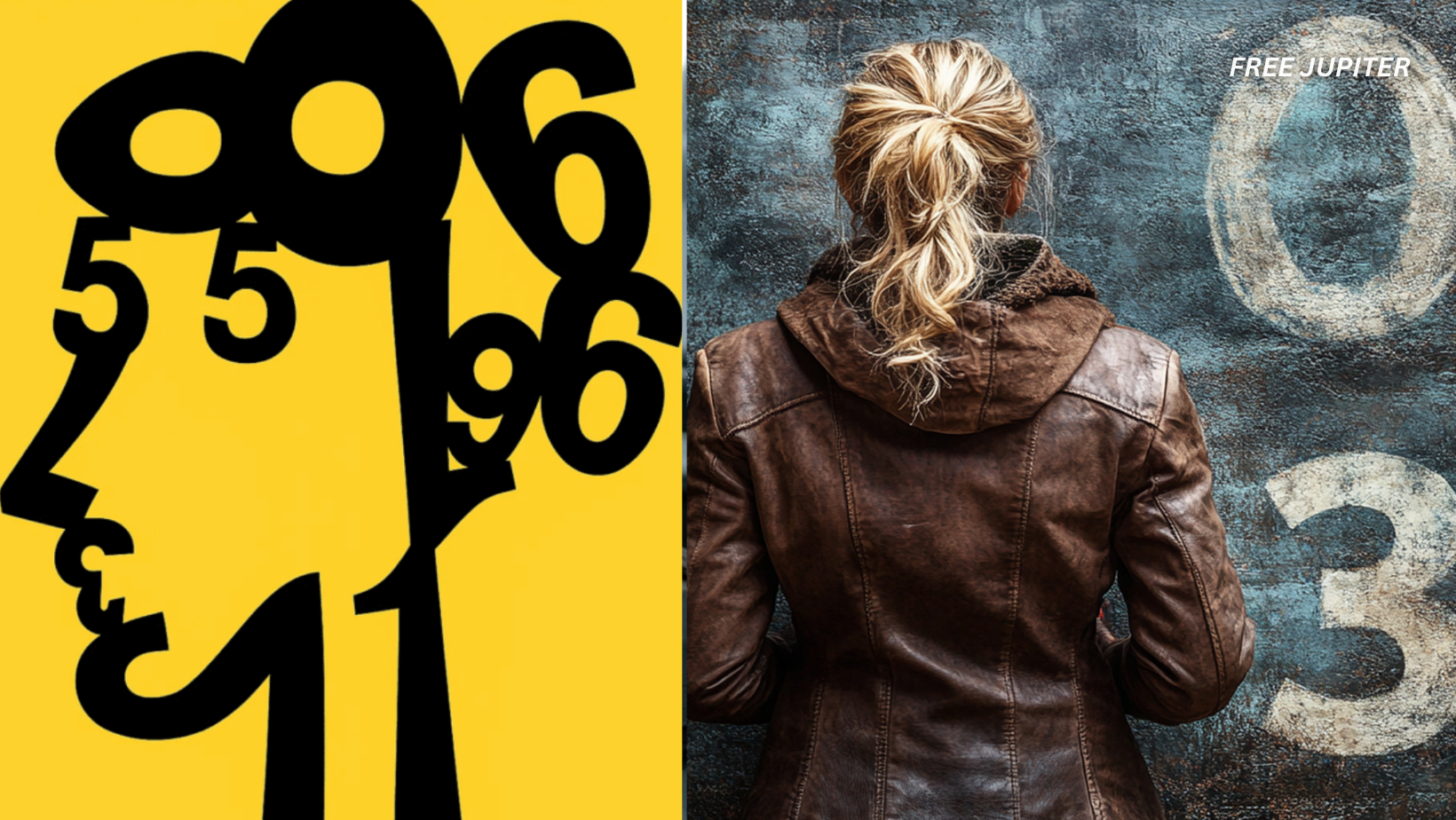Friendly Note: FreeJupiter.com shares general info for curious minds 🌟 Please fact-check all claims—and always check health matters with a professional 💙
Psychological tests disguised as visual puzzles are growing in popularity, and one particular test involving hidden numbers in a swirling black-and-white pattern has captured the internet’s attention. The premise is simple: Look at an image and count how many numbers you can spot. The results, however, claim to say something much deeper about your values, emotional intelligence, and self-awareness. While this may sound far-fetched, psychological research supports the idea that how we perceive visual information can reflect aspects of how we interpret and respond to the world around us.
Let’s unpack what this test really reveals, what it doesn’t, and why you may see something different than your friends do.
The Hidden Numbers Test: A Quick Breakdown
This viral image, often shared on social media, contains a cluster of digits partially obscured in a circular black-and-white design. The numbers range from 0 to 9, but depending on your eyesight, focus, and visual perception, you might only catch a few. Participants are told to glance at the image and write down the numbers they can identify without straining too hard.
It sounds simple, but the results aren’t just about what you see. They’re interpreted as reflections of how your brain filters details, manages complexity, and even responds to ambiguity. According to proponents of the test, the number of digits you see might hint at how aware you are of your values or how grounded you are in your emotional responses.

Fewer Than 5 Numbers: Surface Thinking and Emotional Blind Spots
If you only managed to see 1 to 4 digits, don’t panic. You’re not failing anything. However, the interpretation might point to some areas worth reflection.
People who see fewer numbers may have a more simplified or binary way of seeing the world. This doesn’t mean they’re unintelligent—it may suggest they operate from instinct more than deep reflection. They might miss nuances in conversations or overlook subtleties in social dynamics.
They could also struggle with things like:
- Recognizing when they’ve hurt someone unintentionally.
- Expressing gratitude or vulnerability.
- Picking up on emotional cues in a crowded room.
This group may benefit from deliberately practicing emotional awareness and slowing down in decision-making. Journaling, active listening, or working with feedback can open up new layers of insight. Seeing fewer numbers doesn’t mean you lack values, it may mean they haven’t been consciously explored yet.
Seeing 5 to 8 Numbers: Value-Driven with Occasional Blind Spots
Most people fall into this category. Spotting five to eight digits suggests a strong moral compass and a dependable personality. You probably value honesty, respect time, and hold yourself to high standards.
You likely also:
- Follow through on your commitments.
- Care about how your actions affect others.
- Strive to be fair, even under stress.
That said, you may occasionally compromise those values when overwhelmed. Under pressure, you might get irritable, withdraw, or cut corners. This isn’t hypocrisy—it’s human. But becoming aware of those moments allows you to handle them better next time. Mindfulness techniques, boundaries, and self-compassion are powerful tools for people in this group.
Your perception of more numbers may reflect your ability to balance detail and emotion, a hallmark of emotionally mature people.
Seeing All 9 Numbers: Hyper-Awareness and Emotional Precision
If you saw every digit 0 through 9, you’re in rare company. This interpretation doesn’t claim superiority, but it does suggest a few things about how your mind works.
First, you probably have a high level of perceptual sensitivity. You notice the small stuff, whether it’s the subtle change in someone’s tone or the shift in a pattern. This attentiveness extends into your relationships and values.
You likely:
- Hold deep convictions and stick to them.
- Hold yourself accountable, even when no one’s watching.
- Understand other people’s perspectives with surprising clarity.
People in this category tend to score high in emotional intelligence, especially in self-awareness and empathy. However, the challenge can be overthinking or emotional fatigue. Seeing everything can feel like carrying everything. Practicing detachment, prioritizing what matters, and saying no can protect your energy.
Is This Test Scientifically Valid?
While fun and surprisingly insightful, this test isn’t a clinically validated assessment. It falls under the umbrella of projective or interpretive exercises, similar to inkblot tests or certain personality quizzes. These tools don’t diagnose but encourage introspection.
From a neuroscience angle, the ability to detect multiple numbers may involve:
- Subitizing: The brain’s ability to instantly recognize up to four items without counting.
- Perceptual discrimination: How well your eyes and brain pick out differences under visual noise.
- Selective attention: Filtering relevant details from distraction.
So yes, there’s some science underneath the surface. But the results depend just as much on lighting, screen quality, or even whether you’re wearing glasses.
Why Visual Tests Reflect More Than Just Eyesight
Visual perception is intertwined with cognition. How we see is shaped by what we believe, prioritize, and expect. A person who is used to scanning for emotional subtext may pick up more details than someone who is used to blocking things out for self-preservation.
Here’s where psychology steps in. Studies suggest that perception is not neutral—it’s biased by our emotional states, beliefs, and habits. So if your brain regularly zooms in on nuance and pattern, you’re more likely to find the hidden digits.
And if you’re used to rushing or filtering things through “just get through the day” mode, your perception may literally skip what’s in front of you.
What to Do With the Results
Whether you saw 3 numbers or 9, the test is not about winning. It’s about noticing how you approach seeing. Ask yourself:
- Did you rush or pause?
- Did you doubt your own answers?
- Were you frustrated or curious?
That meta-awareness is where the real insight lies. The numbers are secondary. The takeaway is in how you respond when things aren’t immediately clear.
Want to dive deeper into values and strengths? Try the VIA Character Strengths Survey, developed by psychologists to assess 24 core virtues. It’s free and evidence-based.
It’s Not About the Numbers
This optical illusion test is a mirror, not a verdict. It reflects how you engage with complexity, how deeply you process what’s right in front of you, and how tuned in you are to nuance. These are all clues to your inner world, and sometimes a blurry number in a spiral pattern is all it takes to start a conversation with yourself.
So next time you glance at a seemingly meaningless viral image, take a second look. You might not just be seeing numbers. You might be seeing yourself.










